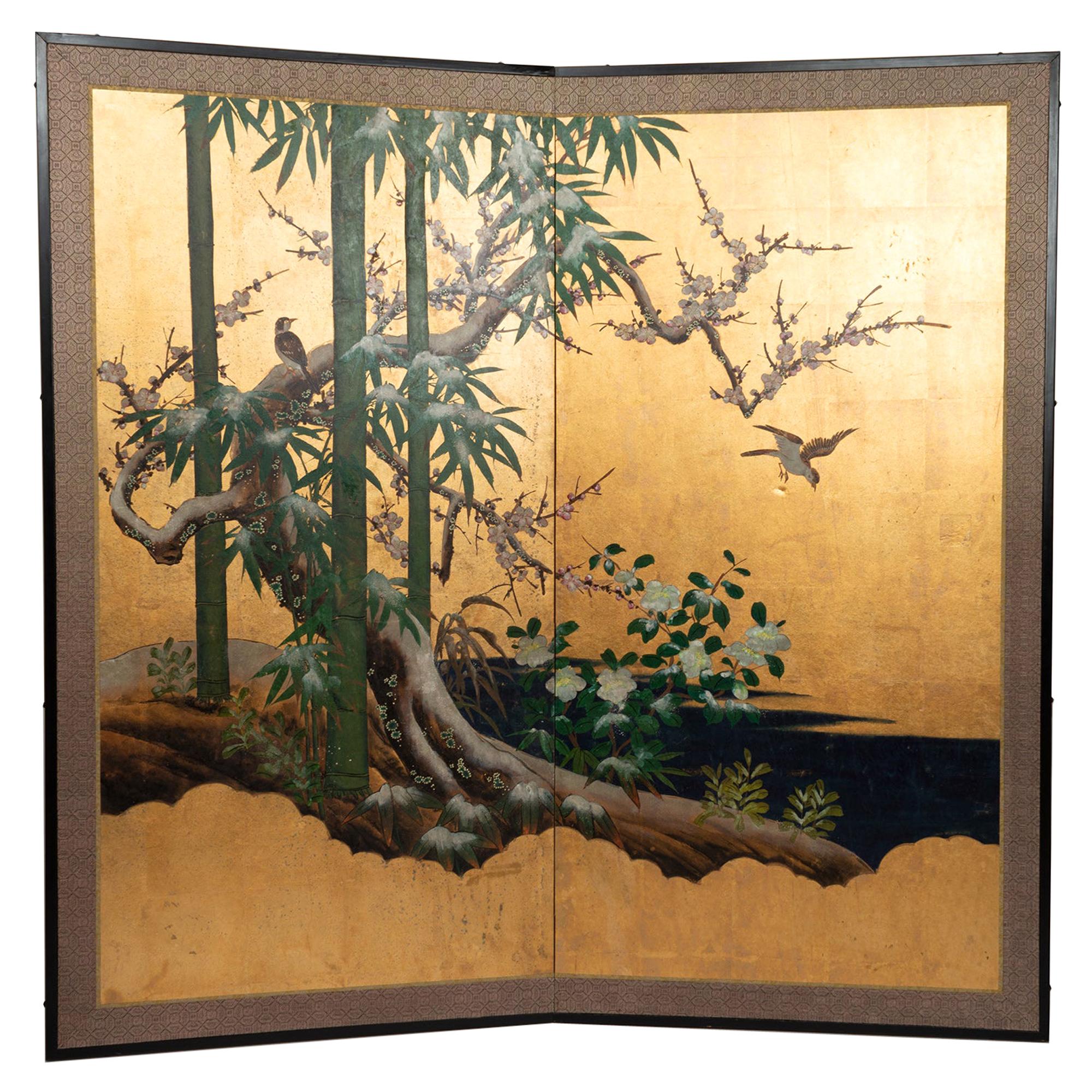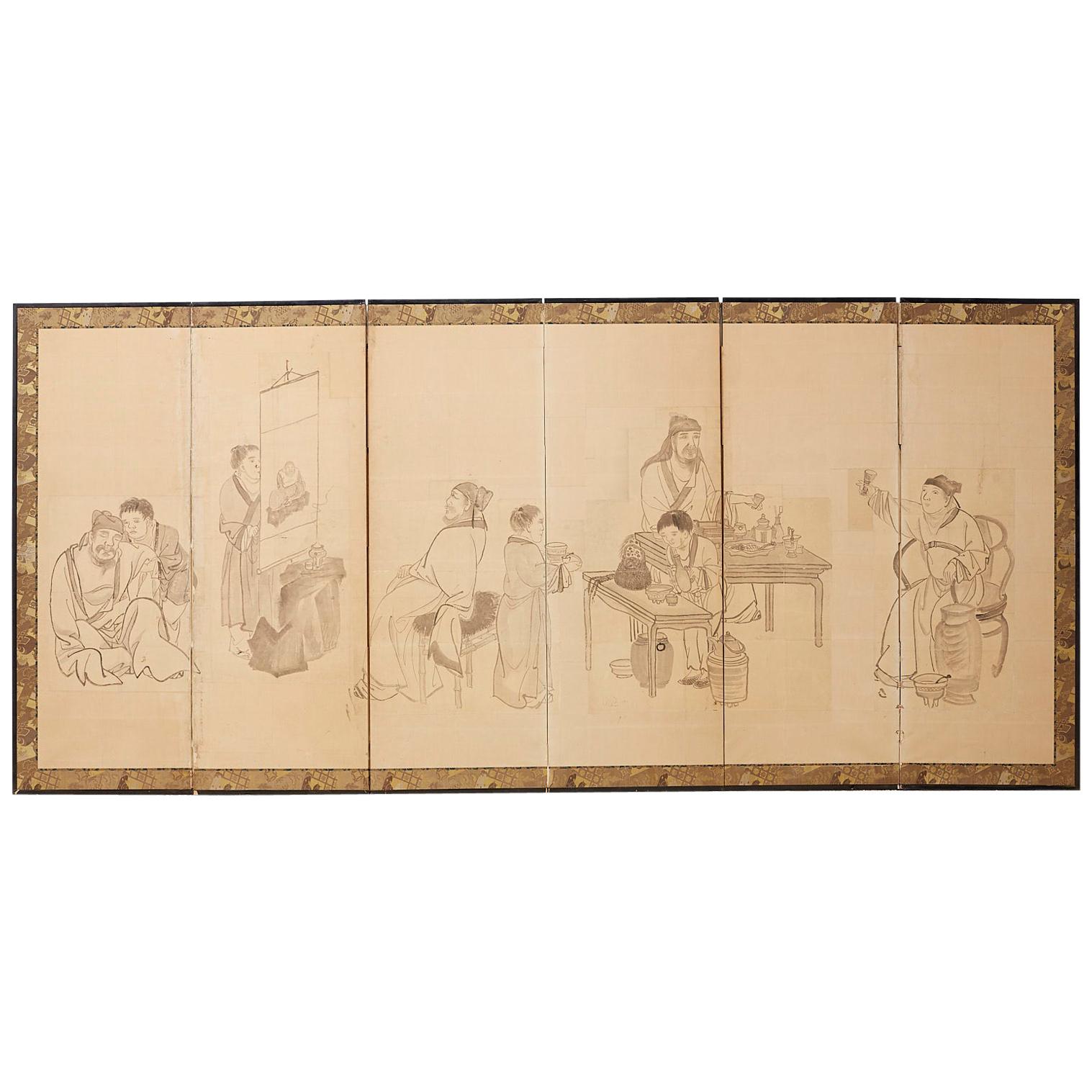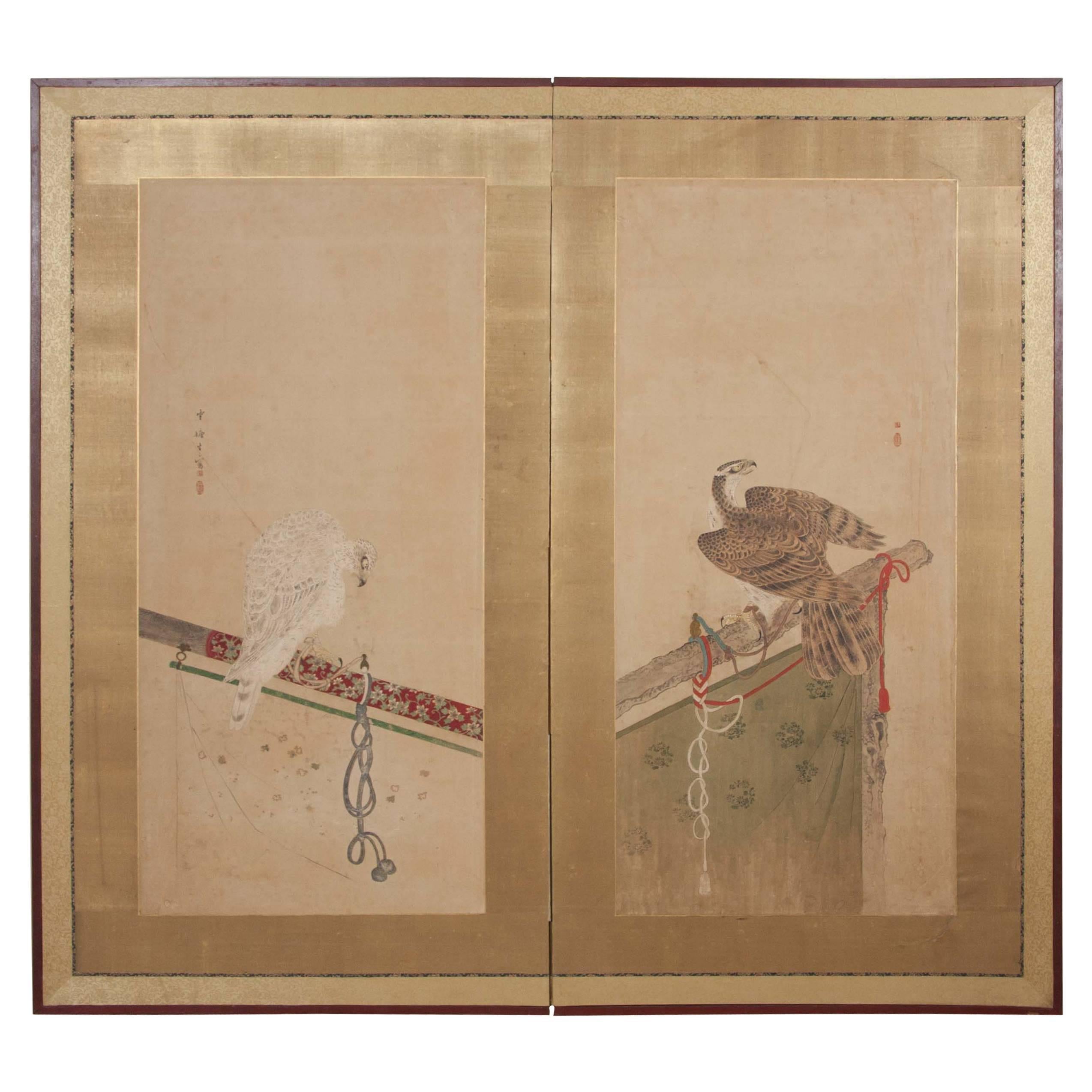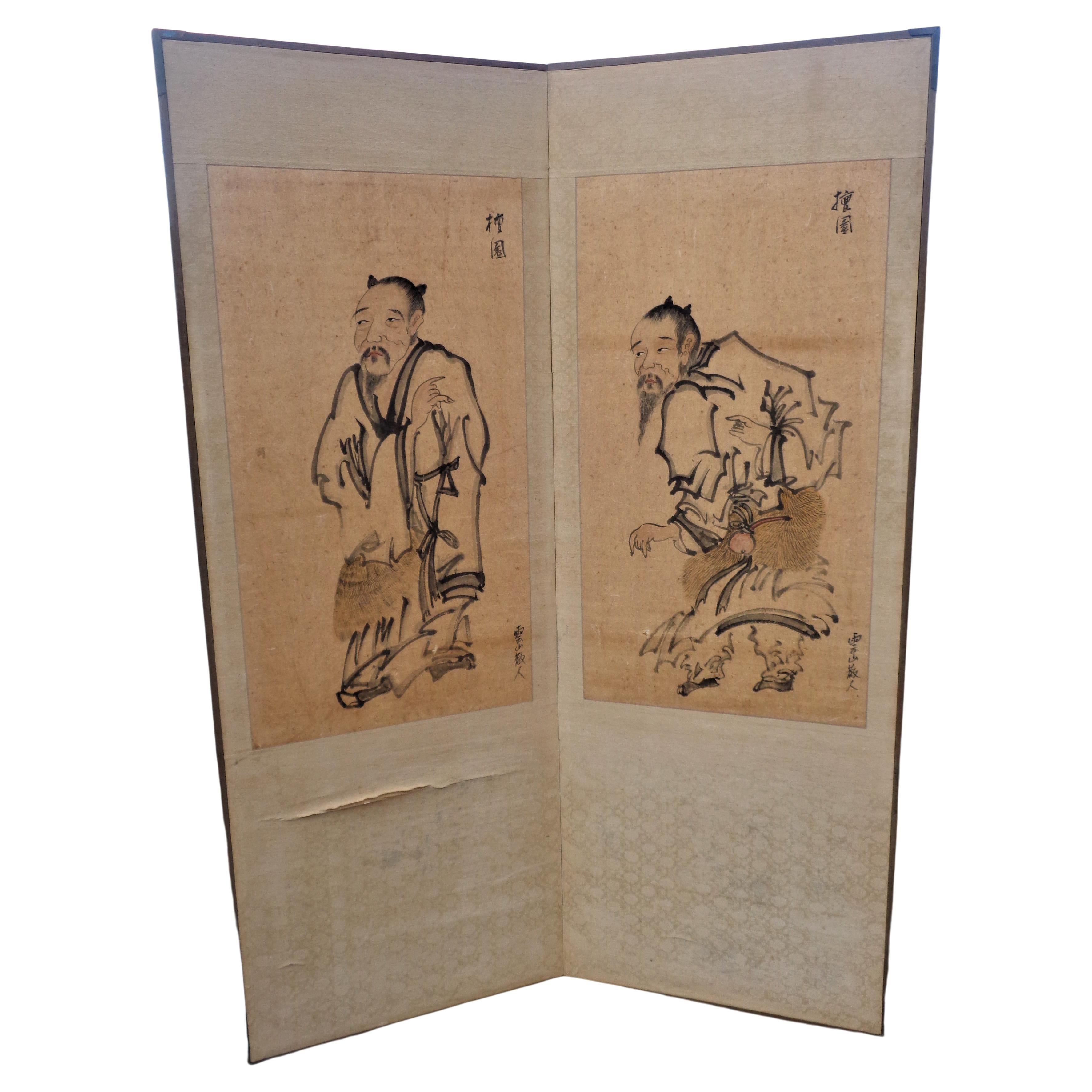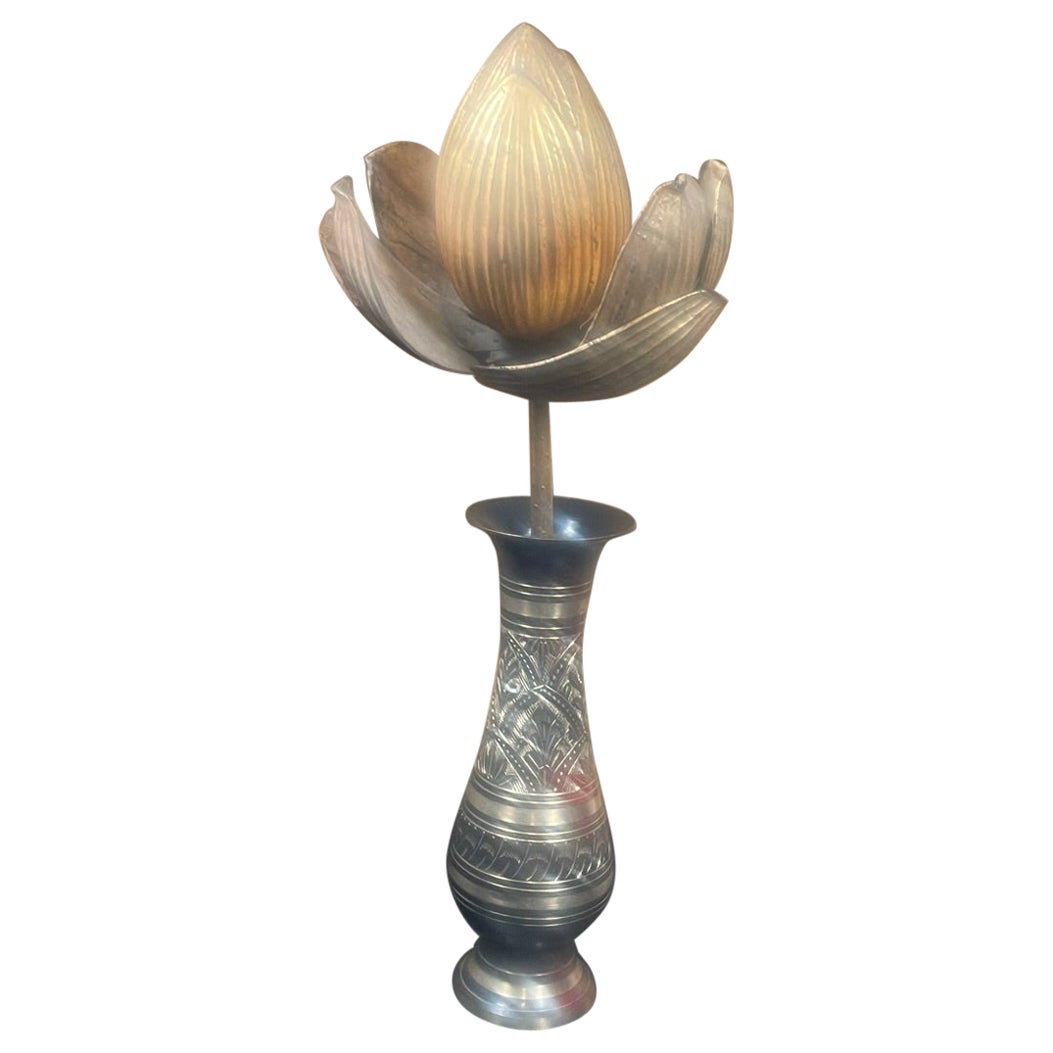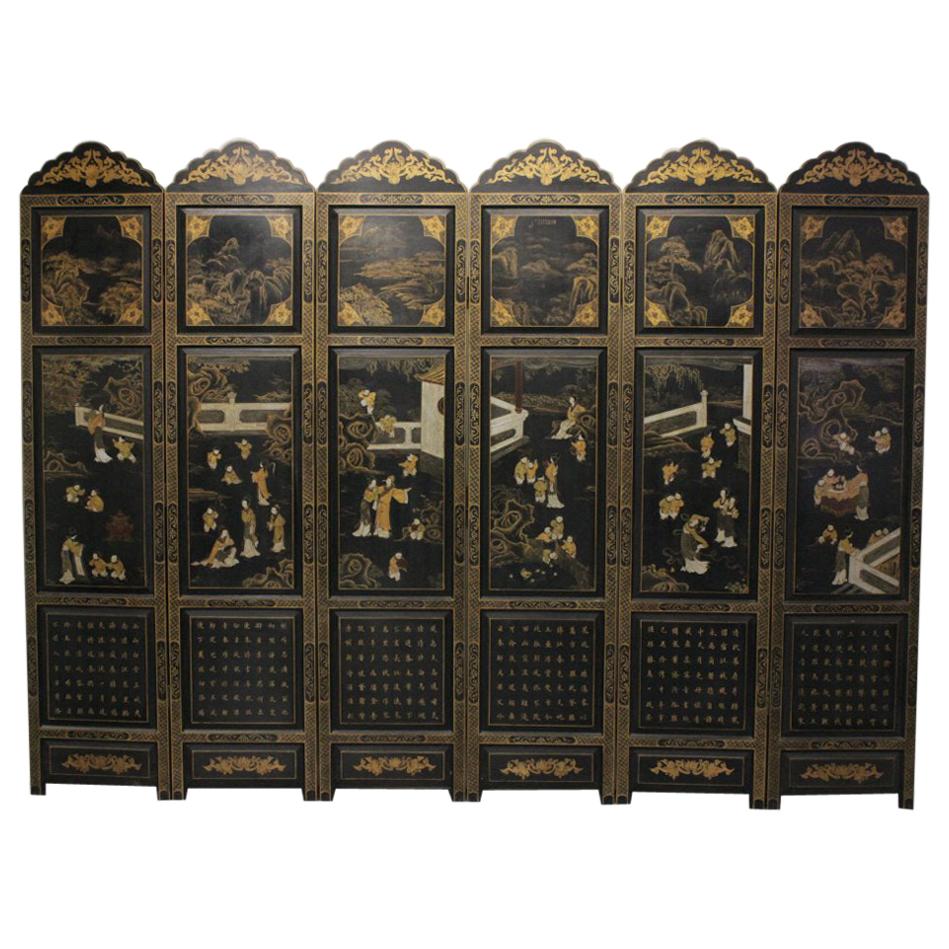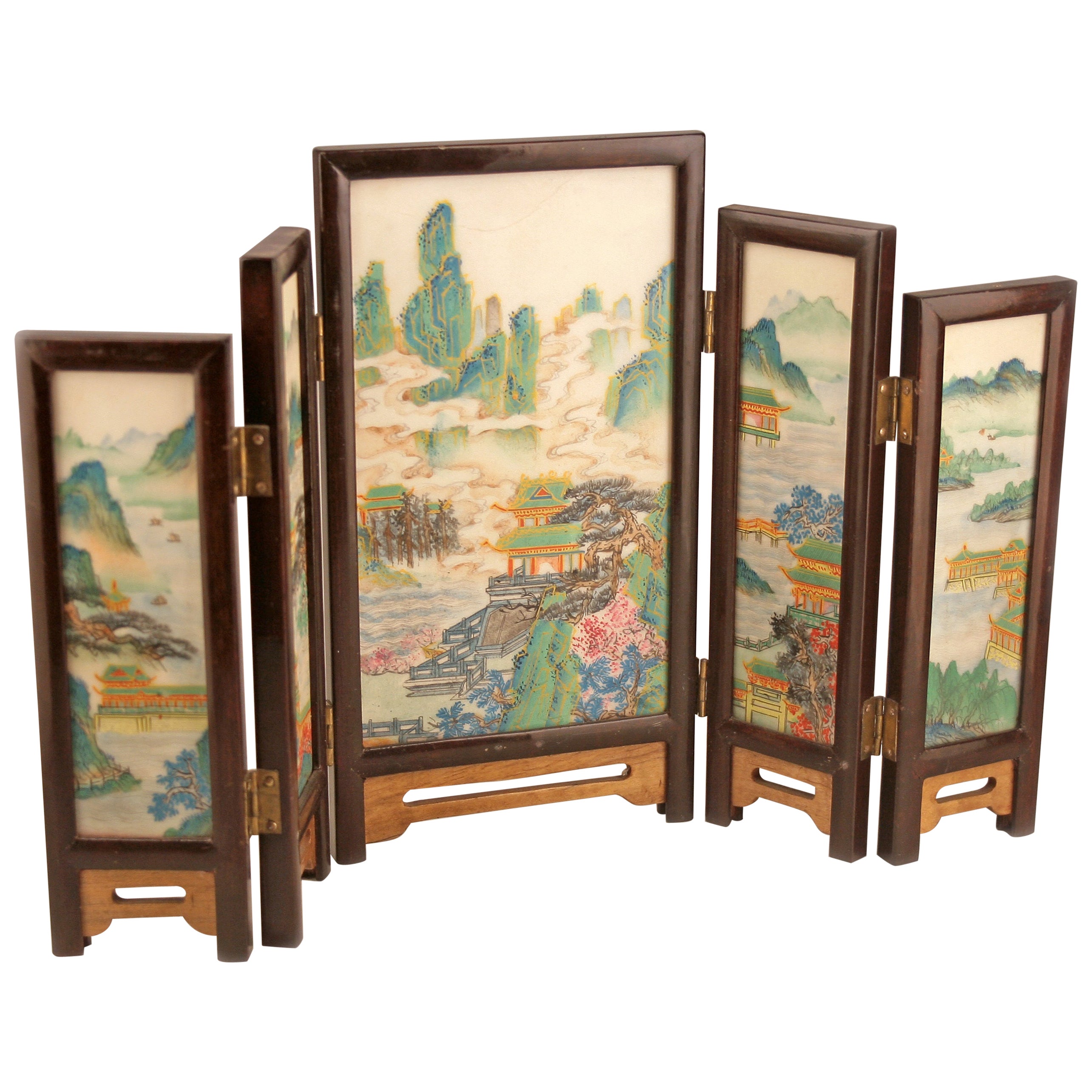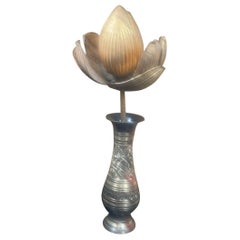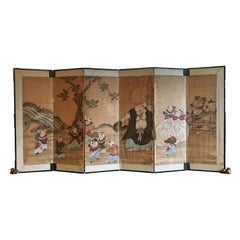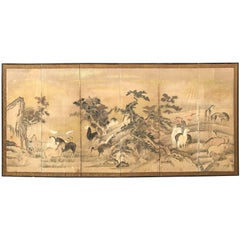
Japanese 22 Horses Fine Antique Six-Panel Screen, Edo Period, 19th Century
View Similar Items
Want more images or videos?
Request additional images or videos from the seller
1 of 21
Japanese 22 Horses Fine Antique Six-Panel Screen, Edo Period, 19th Century
About the Item
- Dimensions:Height: 68 in (172.72 cm)Width: 150 in (381 cm)Depth: 0.75 in (1.91 cm)
- Style:Edo (Of the Period)
- Materials and Techniques:
- Place of Origin:
- Period:
- Date of Manufacture:19th Century
- Condition:Wear consistent with age and use. some paint losses.
- Seller Location:South Burlington, VT
- Reference Number:1stDibs: LU1289211100201
About the Seller
5.0
Gold Seller
These expertly vetted sellers are highly rated and consistently exceed customer expectations.
Established in 1990
1stDibs seller since 2015
2,216 sales on 1stDibs
Typical response time: 1 hour
More From This SellerView All
- Japanese Fine Antique Gilt Lotus Bud Flower, Edo Period 19th CenturyLocated in South Burlington, VTFrom our recent Japanese acquisitions, a rare find, stem #3 Antique Original Japanese temple "blossominig lotus" flower bud stem. This finely hand carved wood and lacquered gold flower stem was made for a Buddhist 19th century temple altar...Category
Antique 1840s Japanese Edo Sculptures and Carvings
MaterialsWood
$450 Sale Price43% Off - Japanese Antique Playful Rabbit Family Amidst Flowers Two Panel ScreenLocated in South Burlington, VTJapan, a small and unusual two panel tea screen of four playful rabbits amidst pink and white flowers in, byōbu. It dates to the Taisho period. Dimensions: 41 inches high and 56 i...Category
Early 20th Century Japanese Taisho Sculptures and Carvings
MaterialsSilk, Wood
- Japanese Fine Antique Gilt and Red Lacquer Lotus Bud Flower, Edo Period 19th CLocated in South Burlington, VTFrom our recent Japanese acquisitions, a rare find Antique Original Japanese temple "blossoming lotus" flower bud stem including its original red lacquer display base. This finely hand carved wood and lacquered gold flower stem was made for a Buddhist 19th century temple altar. Its flower blossoms and leaves symbolize the stages of the path toward enlightenment. The individual parts of each lotus is carved separately then joined in an arrangement and inserted in altar vessels. Also called "Jyôka" , it is placed on or next to an altar in a Buddhist temple. Made with meticulous techniques. In Buddhism, the lotus is an important symbol of divine enlightenment because it blooms into beautiful flowers while growing in mud. Tsunehana means "a flower that continues to bloom forever" and "a flower that does not wither." For this reason, the flowers represented are in different stages of their life, unfolded lotus leaves, buds and full flowers, thus symbolizing the journey towards Buddhist enlightenment. This lovely Japanese antique gilt Lotus flower is an early survivor, circa 1840, and a hard to find treasure that was originally placed on or around a temple altar. This ensemble consists of a single stem, the top most flower, and the bottom leaf- all mounted in the original square red lacquer display base. A gold gilt 3.5 inch long tortoise "minogame" is affixed to the base as seen in the photo. Its attractive original old patina coupled with much of the original gilding remaining present is just the way we like to find them. Dimensions: With original red lacquer display stand Height, 17 inches height and 9 inches in width. The lotus flower stem alone measures 16 inches in height. Provenance: acquired from a Kyoto Japanse monk and collector History of the Japanese turtle "minogame" One of the most famous is the mythological giant turtle...Category
Antique 1840s Japanese Edo Sculptures and Carvings
MaterialsWood
- Japanese Four Panel Garden Screen with Koi, Iris, & TurtlesLocated in South Burlington, VTUnusual Japanese Four Panel Garden Screen, Mint Condition Japan, a superb four-panel silk screen byobu depicting a panoramic garden replete with koi, turtles, Iris nestled near a walking bridge and wooden roofed shelter. This attractive screen dates to the early Taisho period. It is signed Tae. It is beautifully hand painted with a handsome gold natural light background by a skillful artist painter and is signed with inscription and seal in lower right corner: Dimensions: 69 inches high and 113 inches wide extended. Enticing and rare subject matter, this simple rendition of a serene nature setting and size of painting is skillfully and tastefully rendered in mineral paint pigments on silk and with muted soft green and off-white tones depicting a serene nature walk. Perhaps this is someone's dream tea garden. A red lacquered wood perfectly frames this serene and tasteful composition. Photographed in natural light. Lifetime guarantee of authenticity: All of our Asian works of art come with our Lifetime Authenticity Guarantee. We are members of the North American Japanese Garden...Category
Early 20th Century Japanese Taisho Paintings and Screens
MaterialsSilk
- Japan Small Folding Two-Panel Furosaki Tea Screen "Contemporary Simplicity"Located in South Burlington, VTJapan folding two-panel tea screen furosaki byobu depicting a simple cream colored back ground with a blue snow flake border, colors on paper 21.5” high and...Category
Mid-20th Century Japanese Showa Paintings and Screens
MaterialsPaper
$199 Sale Price59% Off - Japanese Fine Hand Carved Pair Flying Cranes With Matsu Trees Ranma ScreenLocated in South Burlington, VTJapan, a fine hand carved wooden screen "ranma" or transom featuring a spectacular composition of a pair (2) of finely carved flying cranes among matsu trees executed in kuri (chestnut wood), circa 1950s. In Japan, the crane, or tsuru, is a national treasure and is considered the bird of happiness...Category
Mid-20th Century Japanese Showa Paintings and Screens
MaterialsWood
You May Also Like
- Japanese Six Panel Screen with Hotei, Edo Period, Early 19th CenturyLocated in Austin, TXA delightful Japanese six panel painted paper screen featuring the beloved figure Hotei, Edo Period, early 19th century. Hotei, called Budai in China, and known as the Laughing Buddha or Fat Buddha in the West, is considered to be an emanation of Maitreya, the Buddha of the Future. In Japan, he also holds a special place as one of the Seven Lucky Gods, being the god of fortune, and protector of children. He is always portrayed as a mirthful and corpulent man, dressed in loose robes that show off his round belly. He carries a sack with him, said to be filled with treasure. As the protector of children, he is often portrayed with them playing on or around him, as he is here. The children portrayed in this screen are dressed in Chinese style clothing...Category
Antique Early 19th Century Japanese Edo Paintings and Screens
MaterialsSilk, Paper
- 19th Century Japanese Edo Six Panel Kano School Landscape ScreenLocated in Rio Vista, CALate Edo period 19th century Japanese six-panel landscape screen featuring a cypress tree over a flowering hibiscus with a pair of hototogisu birds. Kano school painted with ink and ...Category
Antique 19th Century Japanese Edo Paintings and Screens
MaterialsSilk, Wood, Paper
- Edo Period 19th Century Japanese Folding Screen Six Panels Flowers on Gold LeafBy Rimpa SchoolLocated in Brescia, ITClouds of gold, water and many colorful flowers: Japanese six-panel folding screen by Rimpa School. Hand painted with rice mineral pigments and inks on rice paper and gold leaf.Category
Antique Early 19th Century Japanese Edo Paintings and Screens
MaterialsGold Leaf
- Antique 19th Century Japanese Two-Panel Screen ‘Byobu’, Kano School, Edo PeriodLocated in London, GBJapanese Kano School Edo period two-panel screen depicting flowering prunus and bamboo on a rock formation, with colorful birds next to a body of water. ...Category
Antique Mid-19th Century Japanese Edo Paintings and Screens
MaterialsGold Leaf
- Japanese Edo Period Six Panel Screen of Chinese ScholarsLocated in Rio Vista, CAFascinating 19th century Japanese late Edo period six pane funpon screen. Large scale depicting Chinese scholars and officials engaged in leis...Category
Antique 19th Century Japanese Edo Paintings and Screens
MaterialsWood, Paper, Silk
- Japanese Edo Period Two-Panel ScreenLocated in Stamford, CTA Japanese Edo Period two panel folding screen with white and brown hawks of ink and color on paper.Category
Antique Mid-19th Century Japanese Edo Paintings and Screens
MaterialsPaper
Recently Viewed
View AllMore Ways To Browse
19th Century Japanese Lacquer Screen
Japanese Screen Antique Asian Panels
Japanese Horse Painting
Antique Japanese Painted Panel Wood
Six Panel Byobu
Antique Edo Screens
Edo Period Antique Japanese Screens
Antique Japanese Black Lacquer Panels
Japanese Antique Byobu
Horse Panel Screen
Japanese Horse Screen
Byobu Edo
Japanese Screen Horses
Six Panel Antique Japanes Screens
Painted Panel Screen Horses
Japanese Bronze Horse
Equine Antiques
Antique Equine Paintings



